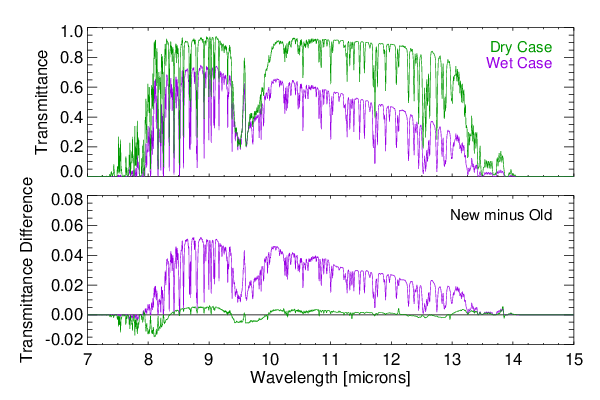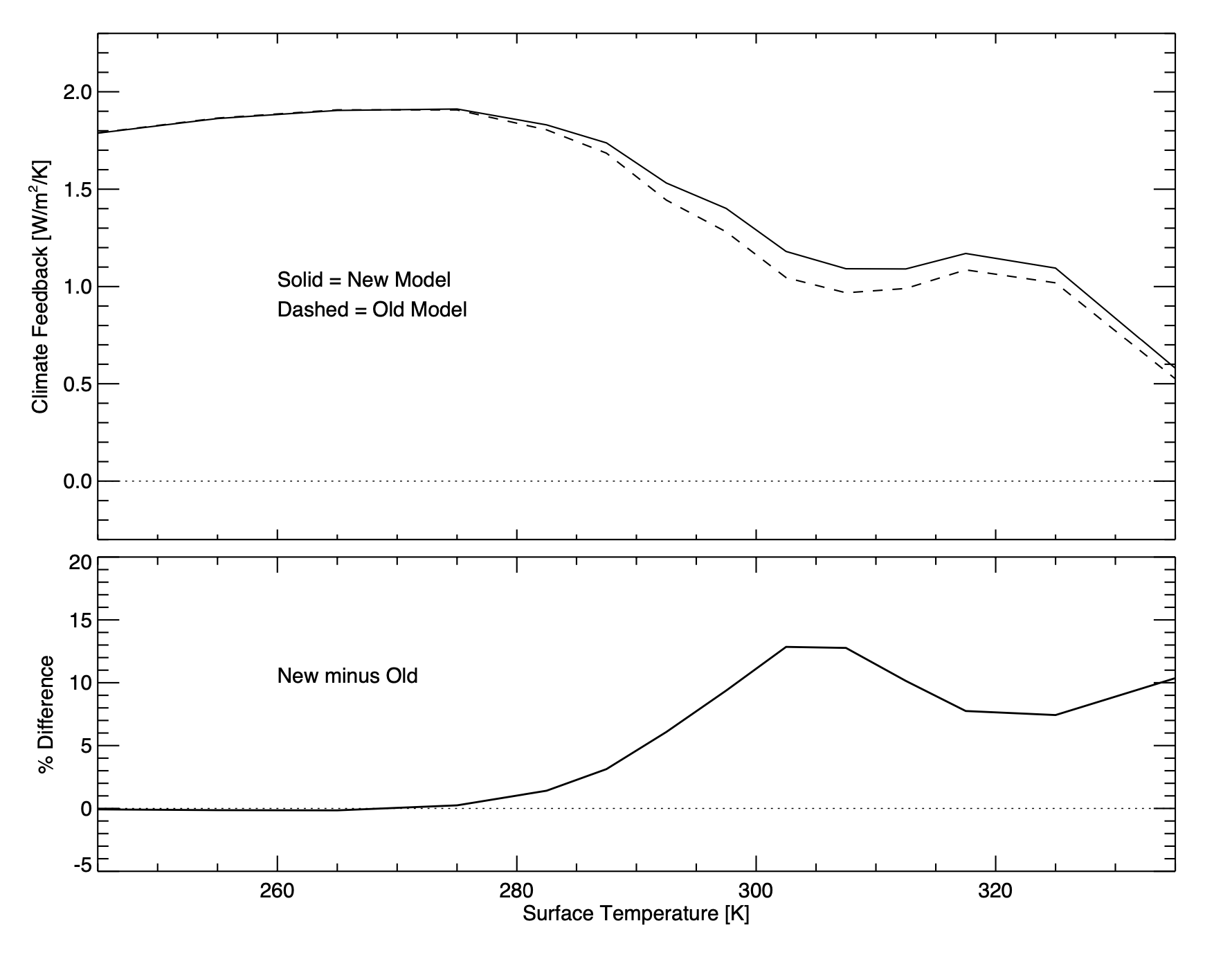A more transparent infrared window
Submitter
Mlawer, Eli J.
— Atmospheric and Environmental Research
Area of Research
Radiation Processes
Journal Reference
Mlawer E, J Mascio, D Turner, V Payne, C Flynn, and R Pincus. 2024. "A More Transparent Infrared Window." Journal of Geophysical Research: Atmospheres, 129(22), e2024JD041366, 10.1029/2024JD041366.
Science

The infrared window region allows much of the radiation emitted by the surface to be transmitted through the atmosphere (top panel), although absorption due to water vapor reduces the transmittance for moist profiles (purple curve) relative to dry profiles (green curve). The bottom panel shows the difference in transmittance (as a function of wavelength) due to the water vapor continuum changes derived in this study for the wet and dry atmospheres. Figure by D. Turner.

The top panel presents the change in calculated longwave flux leaving the atmosphere due to a 1K change in surface temperature under the assumption of moist adiabat atmospheric profiles with 75% relative humidity. This quantity, termed the “climate feedback,” is shown for before (dashed) and after (solid) the modifications made to the water vapor continuum as a result of this study. The bottom panel shows the significant difference in climate feedback due to these modifications. Figure adapted from Mlawer et al. (2024).
Thermal radiation emitted by the surface in the infrared spectral region from 8.0 to 12.8 µm passes relatively unimpeded through the atmosphere, allowing Earth to cool. Researchers analyzed several years of spectrally resolved radiance observations from a ground-based instrument to determine the strength of absorption in this spectral region. The results of this analysis showed that this absorption was overall significantly weaker than had been previously thought.
Impact
Researchers performed a radiative closure analysis that compared radiance observations by a ground-based interferometer and corresponding calculations by a radiative transfer model to analyze the strength of atmospheric absorption in a transparent region of the infrared termed the “infrared window.” The limited amount of atmospheric absorption that does occur in this region is primarily due to water vapor, and in particular due to an absorption mechanism termed the water vapor continuum. The results of this study indicate that the strength of water vapor continuum absorption is less than had been previously thought due to reduced absorption related to the interactions of water vapor molecules with other water vapor molecules -- that is, the water vapor self continuum. The derived water vapor continuum changes allow the Earth to cool approximately 5–10% better than had previously been thought, and climate simulations that use the revised infrared window continuum will show somewhat less warming than before. The change in the radiative cooling is largest for moist conditions, such as in the tropics, and relatively small for drier conditions (e.g., polar regions).
Summary
The infrared window region (8 to12.8 µm) is of great importance to Earth's climate due to its high transparency and thermal energy. Researchers performed a new investigation of the transparency of this spectral region based on observations by interferometers of downwelling surface radiance at two U.S. Department of Energy Atmospheric Radiation Measurement user facility sites. The focus of this study was the dominant source of absorption in this region, the water vapor continuum, and updated values of spectral absorption coefficients were derived for both the self and foreign components of this continuum. The results showed that the self continuum was too strong in the previous version of the commonly used MT_CKD water vapor continuum model, while the foreign continuum is too weak in MT_CKD. In general, the weaker self continuum derived in this study results in an overall increase in atmospheric transparency in the infrared window, although in atmospheres with low amounts of water vapor the transparency may slightly decrease.
Keep up with the Atmospheric Observer
Updates on ARM news, events, and opportunities delivered to your inbox
ARM User Profile
ARM welcomes users from all institutions and nations. A free ARM user account is needed to access ARM data.


















